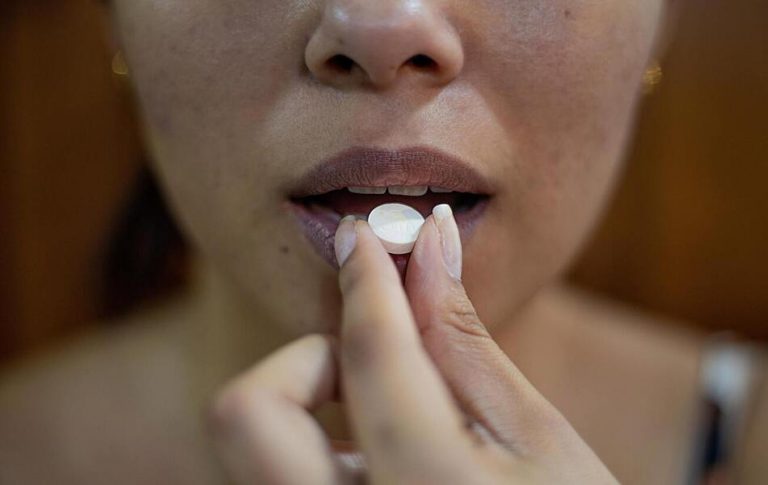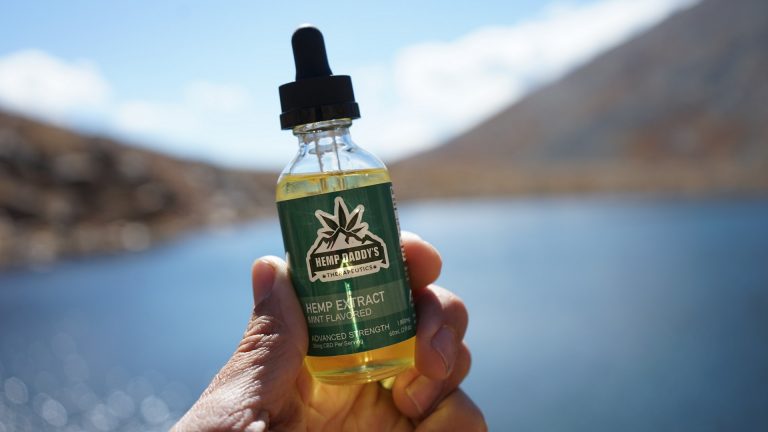34 Amazing Coffee Statistics to Wake You Up in 2024

Coffee is one of the world’s favorite drinks, as these coffee statistics confirm. Not only does it wake us up in the morning—it also has incredible health benefits. The benefits range from improved energy and focus to the reduced risk of certain diseases.
In this article, you’ll find out more about the coffee industry and the health benefits of coffee. You will also get to know about popular coffee companies, coffee production, and more.
Top 10 Most Incredible Coffee Statistics to Start Your Day
US Coffee Consumption Stats and Facts
What is a better way to start your day than brewing a nice hot cup of Joe and reading up on some amazing stats and facts on coffee and coffee habits in the US?
[visualizer id=”98207″]
1. Approximately 62% of Americans drink coffee daily.
(NCAUSA)
How many Americans drink coffee? According to the National Coffee Association’s latest report, about seven in ten Americans drink coffee every week. At the same time, 62% consume coffee every day. In fact, their 2020 report shows that overall coffee consumption is on the rise, increasing by 5% since 2015.
2. Americans drink an average of 3 cups of coffee a day, stats and coffee trends from 2020 show.
(NCAUSA) (Statista)
A January survey of 2,838 respondents showed that US adults drink an average of 1.87 cups a day. The same survey states that coffee consumption in the US has remained steady over the years — most US adults drink around two cups of coffee a day. The only exception dates back to 2016, when consumption went down to about 1.64 cups per day.
3. Per capita coffee consumption in the US in 2020 was 10.5 pounds.
(IBISWorld)
Data shows that US citizen coffee consumption has remained mostly the same since 2011—ranging from 8.7 to 10.5 pounds. Product varieties (the likes of cold brew or CBD-infused coffee) spurred consumption. Availability and technological advances also increased the revenue of coffee and snack shops.
4. The demographics of coffee drinkers in the US is constantly changing.
(Statista)
Namely, in 2020, adults aged 70 and older consumed the most coffee. Older adults (70 and over) have around 2.18 cups a day, data shows. They are also the most likely to be coffee drinkers when compared to other age groups. Namely, nearly 70% of Americans aged 60 and over-consume coffee—a much higher number than the 50% of 18- to 24-year-olds who said the same.
5. Based on coffee statistics by gender, men are bigger fans of the beverage than women.
(When Women Inspire)
Not only do more men drink coffee than women (over 50% as opposed to 32%), they also consume more of the beverage in quantity. Men have about 2.4 cups a day, or half a cup more than female consumers.
6. Americans most commonly consume coffee in the morning.
(Statista)
Americans love waking up to coffee. A 2020 survey on average coffee consumption discovered that people in the US had about 1.3 cups of coffee for breakfast each day. The least common time of the day for coffee, the same survey shows, was during lunch or dinner.
7. The popularity of single-cup brewing machines has increased by almost 50% from 2015 to 2020.
(NCAUSA) (Statista)
A single-cup brewing machine, owned by many Americans, was the second most popular way to make coffee in 2020. The most common method of preparing this beverage, prevailing US coffee trends show, is a drip coffee maker. More than 40% of respondents say that they used this machine the day before.
8. One in five Americans under the age of 40 drinks at least one cold brew or nitro coffee every week.
(NCAUSA)
The popularity of these creamy, chilled coffees has grown significantly. That’s despite the fact that very few consumers were familiar with them five years ago.
What do National Coffee Association statistics say about traditional coffees? Even though the consumption of traditional coffee has gone down by 10%, it’s still popular. What’s more, it’s trendy among older adults who are twice as likely to consume this type of coffee than 18- to 24-year-olds.
9. US adults spend an average of $1,100 on coffee every year.
(Fool) (MarketWatch)
How much does the average American spend on coffee? The answer is about $92 a month. This might seem like a huge sum, although it probably sounds about right for true coffee lovers. After all, the average price of a cup of coffee is $2.99 at restaurants or $4.24 at gourmet coffee shops, while at Starbuck, a cup of coffee ranges between $1.95 and $2.15.
10. US customers leave around 11.4% in tips for their coffee order.
(Entrepreneur)
Alaska’s coffee drinkers give the biggest tips, leaving 17.5% on average. On the other hand, baristas in New Jersey get the smallest tips in the United States. They only get 7.5% even though the state doesn’t have the highest average price for a cup of coffee. That honor belongs to North Dakota, whose residents pay the most for coffee—around $4.45 for a cup of latte.
11. There are only two states in America that grow coffee.
(World Atlas)
Hawaii and California are the only two US states with black, volcanic soil suitable for growing coffee. Puerto Rico (an unincorporated territory of the US) also has a profitable coffee industry. All in all, the majority of the coffee consumed in the US is imported from South America.
12. When it comes to coffee consumption by state, New York ranks number one.
(Real Good Coffee Company)
Washington, California, and Oregon follow NYC as the four top states with the most coffee drinkers. The South, on the other hand, has the least number of coffee drinkers. Californians also dish out the most on coffee, whereas Midwest states, like Ohio and Oklahoma, spend the least.
World Coffee Consumption Statistics
Which country produces and exports the most coffee? Do Americans have the highest consumption per capita? How many cups of coffee do we drink across the world?
Check out the answers in this section.
[visualizer id=”98209″]
13. Around 500 billion cups of coffee are consumed across the world every year.
(Much Needed)
A whopping 500 billion cups of this beverage are consumed every year, which is roughly equivalent to about 2.25 billion cups per day. With such high consumption levels, it’s no surprise that coffee is one of the world’s most popular beverages.
14. Finns drink the most coffee, coffee consumption statistics by country indicate.
(World Atlas)
Finland’s national average consumption is 26.45 lbs per capita, making it the top coffee-consuming country in the world. Finns have a rich culture of coffee drinking, celebrating many special occasions with coffee. What’s more, coffee breaks are mandatory by most workers’ unions in the country, further spurring consumption.
15. Canada is the only non-European country among the world’s top ten coffee-drinking regions.
(World Atlas)
Interestingly, with its 14.33 lbs coffee consumption per capita, Canada is the only non-European country among the top ten coffee-consuming countries. The USA, on the other hand, ranks significantly lower in the 25th position.
16. Brazil produces one-third of the world’s coffee supply.
(Eleven Coffees) (Cafédirect)
Brazil leads the world in coffee production, with 7,844,000,000 pounds produced in 2019. According to statistics about coffee production, Vietnam is the world’s second-largest manufacturer. The country produced 1,650,000 tons of coffee in 2016—an incredible increase from the 6,000 tons produced in 1975.
17. Coffee is the second most traded product in the world.
(BLLNR)
Coffee is only second to crude oil in terms of traded commodities. The coffee trade tops some other incredibly profitable commodities, including Brent oil, gold, sugar, and corn. What’s more, coffee isn’t just one of the most traded goods on the market—it’s also one of the oldest.
18. Arabica is the most popular coffee bean worldwide, with 93.83 million bags produced in 2019/2020.
(Statista) (Taste of Home)
Coffee statistics for 2021 expect the production of this sweet, complex blend to reach 100 million bags. Even though Robusta contains more caffeine and is easier to cultivate, it still ranks second in popularity and production.
19. British people drink around 95 million cups of coffee per day.
(Billi UK)
The UK is a country with plenty of coffee drinkers and growing coffee culture. Nevertheless, when it comes to coffee vs. tea popularity in the UK, coffee is ranked second. Brits drink about 165 million cups of tea every day, making it the most popular hot drink in this country.
20. The COVID-19 pandemic caused a 0.95 percentage points drop in the growth of global demand for coffee.
(ICO)
In other words, demand for coffee across the world reduced by 1.6 million bags. According to a comprehensive study of the top-20 coffee-consuming countries, this decline is caused by a 1% decline in GDP growth, which in turn is the result of coronavirus restrictions.
Coffee Industry Stats and Facts
Now it’s time to get down to the latest and most important facts and figures about the ever-growing coffee industry. Let’s dive right in.
21. The global coffee industry is worth more than $100 billion.
(Business Wire)
The value of the global coffee market stood at $102.15 billion last year. If the value of coffee industry revenue for 2019 doesn’t impress you, consider this — the market will grow at a record high CAGR of 6.2% from 2020 to 2026. In other words, it will reach up to $155.64 billion.
22. Global coffee exports reached 9.67 million bags in October 2020.
(ICO)
Note that it’s an increase from 9.37 million in October last year. Up to October 2020, exports of Arabica amounted to 78.46 million bags. That is down from 83.81 million bags in 2019. In comparison, Robusta exports totaled 49.04 million bags—a slight increase from the 48.65 million bags exported in the same period of last year.
23. Coffee industry facts and data reveal that Europe makes up 34% of global coffee consumption.
(CBI)
This makes Europe the biggest coffee market in the world. Asia and Oceania come in second, boasting a market share of 22%. Latin America and North America rank third and fourth—both regions hold a 19% share of the market.
24. Starbucks is the biggest coffee shop chain in the world, coffee industry facts disclose.
(Insider) (CNBC)
As of June 2019, the coffee retail giant has over 15,000 locations in the US and more than 30,000 shops globally. How much do Frappuccinos and Pumpkin Spice Lattes bring in for Starbucks? The Seattle company reported a net income of $802.9 million in Q4 2019.
25. Starbucks is also one of the key players in the specialty coffee industry, statistics report.
(JavaPresse Coffee Company)
Although Starbucks doesn’t meet all the criteria to be 100% specialty coffee, it is 99% labeled “ethical.” It follows sustainable sourcing practices and partakes in the trends in the specialty coffee market. Those trends include cold brew coffee, french presses, and pour over brewers.
26. In 2019, the US coffee and food service industry employed more than 500,000 people.
(Bureau of Labor Statistics)
According to coffee statistics in the US, there were 5,324,100 workers in the coffee and food industry in the US alone. These workers earned a median hourly wage of $11.06, or $23,000 a year. Most of these employees worked at fast-food restaurants. As many as 429,700 got positions of hosts and hostesses in restaurants, lounges, and coffee shops.
Coffee Facts and Health Statistics
Most people love coffee for the taste and the energy boost, but this amazing drink has many health benefits. Here are just a few of the many ways coffee can improve health and wellbeing.
27. Coffee can lower the risk of death from a disease by 10%.
(NIH)
Seniors may especially benefit from drinking at least three cups of coffee every day. Regular coffee consumption can also reduce the risk of developing a number of diseases, including Parkinson’s disease, depression, Alzheimer’s, liver cancer, and type 2 diabetes.
28. Regular coffee consumption reduces the chances of suicide by 50%.
(Harvard)
A Harvard study has provided us with these incredible facts about coffee consumption, revealing how caffeine affects the central nervous system. It can act as a mild antidepressant—stimulate the production of serotonin, dopamine, and noradrenaline. As a result, both men and women who drink coffee daily are less likely to commit suicide.
29. Coffee consumption has links to weight loss.
(PubMed) (Mayo Clinic)
Here are some more fascinating facts about coffee drinkers. Namely, several controlled trials found that doubling coffee intake results in weight reduction by 22% and BMI reduction by 17%. Caffeine can suppress appetite and burn calories. However, everyone should exercise caution when consuming caffeine. Even the purest blend or the best caffeine pills can cause nervousness and insomnia, so make sure you use them in moderation.
30. Drinking 50 to 100 cups of coffee could kill you.
(USA Today)
Most adults won’t experience any side effects if they keep average coffee consumption per day lower than 250 mg of caffeine (i.e., 2.5 cups of coffee). Negative effects are more likely to occur if adults consume more than 500 mg of coffee or five cups. The most common adverse effects of excessive coffee consumption include dizziness, anxiety, higher BP, and palpitations.
Interesting Coffee Consumption Statistics
Are you almost done with your coffee? For the final section, we’ve put together some of the most captivating facts and data from the amazing world of coffee.
31. Almost half of the coffee drinkers consume the beverage because they like the taste.
(Amerisleep)
A survey of 1,000 coffee consumers revealed that 42.9% of respondents drink coffee because they like the taste and 26.2% consume it for energy. Even though coffee is most commonly associated with pick-me-ups in the morning and attention boost, coffee drinking trends indicate that a smaller percentage consume coffee to stay awake (12.1%) and focused (10.1%). If you only drink coffee for the taste and still feel like your brain needs to wake up, try some of the best nootropic supplements to get that effect.
32. 61% of coffee drinkers had gourmet coffee in the past day, coffee statistics from 2019 show.
(Statista)
The main difference between gourmet and non-gourmet coffee lies in the beans. Gourmet coffee uses only the best, premium-quality Arabica as opposed to cheaper and more available Robusta beans. Gourmet coffee has been one of the rising coffee industry trends for over six years. It has resulted in the decrease of non-gourmet coffee consumers.
33. 79% of respondents say they drink coffee at home.
(Food and Wine)
A survey on coffee consumption and habits reveals that nearly 80% of participants had made a coffee at home the previous day. The number of people drinking coffee at shops or restaurants is considerably lower—only 36% said they had bought coffee outside the previous day.
34. Office workers are one of the biggest coffee consumers in the US, coffee consumption trends tell us.
(Brew Smartly)
It’s reported that a US office worker consumes an average of 20 cups every week, or 1,040 cups a year. They are not the biggest coffee drinkers in the office, though. In Europe, more than half (52%) of the coffee drunk outside is consumed in the office.
The Bottom Line
Coffee is one of the most popular beverages in the world. Facts and statistics about coffee show that, when consumed in moderation, this drink can energize you, help you burn fat, and keep you focused and attentive. It’s also a great drink for any occasion, whether it’s a social gathering, a date, your morning routine, or a meeting with coworkers.
So if you can handle the caffeine content, have a cup today and enjoy the many benefits this amazing drink offers!
FAQs
Who drinks the most coffee?
Most surveys and studies point to Finland as the country that consumes the most coffee per capita. However, according to Statista market analysis, 2021 was the year of the Dutch. The Netherlands is 2020’s number one country in terms of per capita consumption. Nordic countries like Finland, Norway, and Sweden come right after.
How much coffee does the average American drink?
Coffee is America’s favorite drink, with the average US citizen consuming about 3 cups a day. In the US, more people drink coffee than they do tap water (47%) and bottled water (54%).
What age group drinks the most coffee?
According to the NCA, coffee consumption increases with age. Thus older adults are the biggest coffee drinkers. That said, Americans under the age of 40 have seen the biggest increase in coffee consumption—up by 40% in the last five years.
How much do people spend on coffee?
Millennials spend the most on coffee—around $2,008 a year. Interestingly, 35- to 44-year-olds are a close second, spending $1,410 per year on this beverage. When it comes to gender, coffee statistics indicate that women spend more on coffee than men—$2,327 a year vs. $1,934. Another interesting fact is that people in finance and insurance spend the most on coffee from coffee shops.






